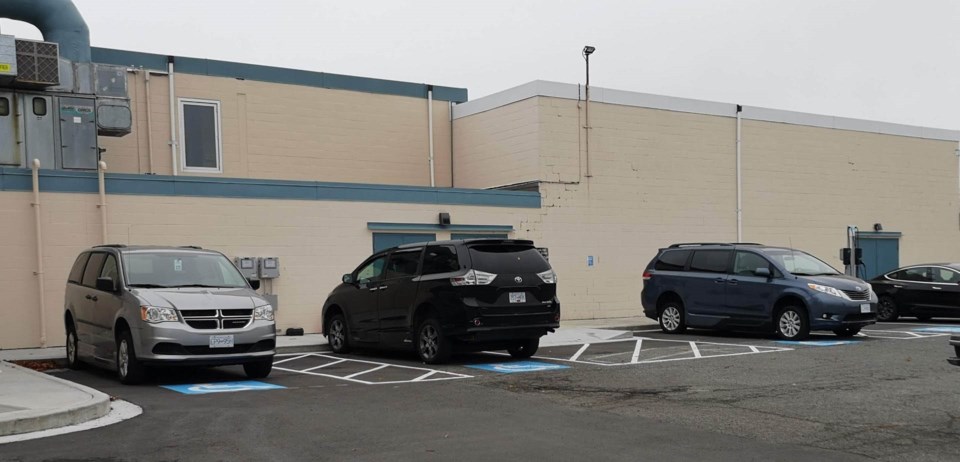In the mid-1970s (handicapped) accessible parking spaces began to appear in the Lower Mainland. They came about because a group of people that used wheelchairs and drove their own cars found they were unable to independently get their wheelchairs out of the vehicle because the parking spots were too narrow. As such wider spaces were introduced in the BC Building Code and a decal of sorts was developed to identify a ‘qualified disabled driver’.
However, because these spaces were usually the closest to the door of a store or a mall, others with various conditions began advocating for their group and that they be allowed to use them as they had a reduced respiratory system, a heart condition, an amputation of a lower limb etc.
As such criteria expanded and legitimate decal (now placard) holders grew, people using wheelchairs found it more and more difficult to find an empty accessible parking space.
In recent years, the design of vehicles changed as did the design of wheelchairs, including motorized wheelchairs and mobility scooters.
Many individuals that use a wheelchair for day-to-day mobility now drive a van with a side loading ramp. So once again we had to advocate to government for change in the design of accessible parking spaces because the existing spaces could not accommodate the vans with side ramps.
Now more and more municipalities are introducing enhanced accessible parking bylaws that include “Van Accessible” spaces. They are specially marked with added wording to show they are wider for vans with side ramps (or lifts).
The placement of these spaces can also be a barrier if parking lines are improperly marked, such as placing an accessible space directly in front of a curb cut or wheelchair let down. Once a vehicle parks there, it makes the curb cut unusable for someone in a wheelchair preventing them from accessing the establishment.
People that must use a wheelchair for their mobility often feel frustrated and sometimes angry when they see someone with a legitimate placard pull into an accessible space and “walk” into the mall when there was an empty ‘regular’ parking space right beside or close to the accessible one. Having a placard doesn’t mean you have to park in an accessible space.
These spaces are also sometimes used to leave empty grocery carts in. This also creates a barrier for someone that needs that space. Signage is not maintained with post signs removed and pavement markings faded...more erosion of access.
Many municipalities have imposed a level of fines for those abusing these spaces and some private developments will have vehicles towed if they don’t have a valid placard displayed.
It’s a well-known fact that these placards are coveted, so much so that counterfeit placards have been found displayed in vehicles checked by the authorities.
The City of Delta has recently enhanced its accessible parking bylaw to better reflect today's needs for people with more severe disabilities. This includes ‘van accessible’ spaces to accommodate side ramps and a more detailed description of what an accessible space must include.
As we approach National AccessAbility Week – May 30 to June 5, 2021 we ask that citizens and residents keep in mind who these spaces are meant for, and respect that intent.
Editor’s note: Tsawwassen resident Vince Miele is a member of the South Fraser Active Living Group. He has been a strong advocate pushing the City of Delta for more accessible parking and buildings for the past few years.



